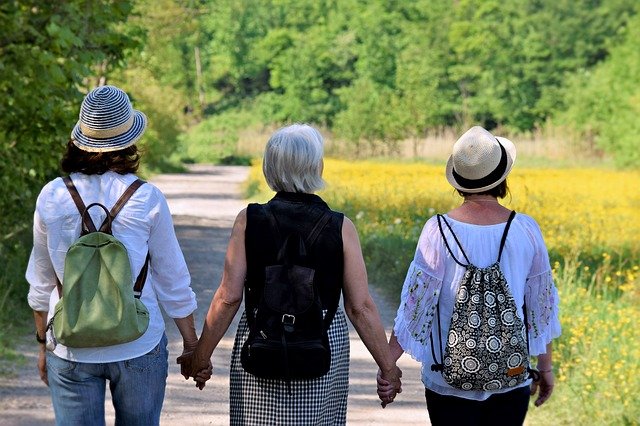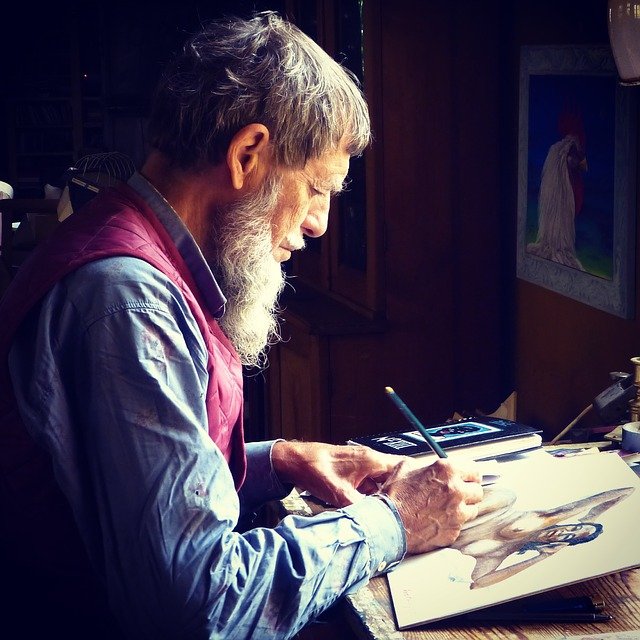In a prelude to a guided meditation podcast, Remembering Thich Nhat Hanh, Diana Winston spoke with reverence about the life of Thich Nhat Hanh and his global influence. Nhat Hanh, who died aged ninety-five in Vietnam on January 22 2022, was a Zen Master, peace activist, poet and author of over 100 books focused mainly on mindfulness and peace. He established multiple Buddhist communities around the world and is considered the “Father of Western mindfulness”. He exerted a global influence throughout his teaching life conducting numerous retreats and speaking with influencers such as the World Bank, Google and the U.S. Congress.
During the Vietnam war Nhat Hanh introduced the concept of “Engaged Buddhism” and led Buddhist monks in actions designed to help people of Vietnam who were suffering from the drastic effects of the extended conflict and regular bombing. He argued that mindfulness increases our capacity to “see” but that this insight needs to be translated into compassionate action. Nhat Hanh established the Plum Village in France, the largest Buddhist community in the world and an international practice center for followers of his mindfulness approach. The influence of Thich Nhat Hanh is so pervasive that it is not possible to do its credit in this short blog post. However, his teachings and meditations are readily accessible via Plum Village videos on YouTube and his full life history on the Plum Village website.
Guided meditation
Diana Winston, at the outset of her podcast meditation, acknowledged the profound influence that Nhat Hanh had over her mindfulness practice and that of numerous other mindfulness teachers and practitioners around the world. She stressed Nhat Hanh’s influence over the practice of bringing mindfulness into everyday life and emphasised the benefits of mindfulness meditation in terms of stress reduction, overcoming anxiety and depression, managing pain, improving mood and developing a positive mindset and emotions.
After suggesting a comfortable, focused posture, Diana begins the meditation with the encouragement to take a couple of deep breaths, recalling the words of Nhat Hanh “Breathing in, I calm the breath; breathing out, I smile”. She reminds us to identify any points of tension in our body and to soften those points to release the tension.
Next Diana asks us to focus on our breath – the process of breathing, whether the awareness is through the movement of air through our nose or the undulations of our chest or abdomen. This is a passive observation, not trying to control the breath, but following it as it happens naturally in our body.
She then suggests that we focus on the sounds that surround us – again passively, allowing the sounds to reach us without attempting interpretation or evaluation (in terms of pleasant or unpleasant).
Diana maintains that it is only natural for thoughts and feelings to intrude and distract us from our chosen focus. However, she recommends that we use our breath or sounds as our anchor to bring us back to our focus. An alternative is to focus on bodily sensations such as those of our feet on the ground or our fingers touching each other causing tingling, warmth or a sensation of flow. I like to use fingers touching as my anchor and I find that when I am waiting for something (e.g. a traffic light) I can touch my fingers and immediately drop into a breath consciousness that is calming.
Diana observes that there are times when strong feelings will emerge, depending on what is going on in our lives at the time. She suggests that we face these feelings and allow them to manifest without staying absorbed in them. I noted that at one point in the meditation, I experienced a profound sense of sadness precipitated by the distressing events in Ukraine. I was able to stay with the sadness for a time and then restore the focus on my anchor, the sensations in my joined fingers. The period of ten minutes silence at the end of the meditation podcast enabled me to deepen my focus.
Reflection
In her meditation podcast, Diana recalls Thich Nhat Hanh’s comments about death and dying. In his video podcast on the topic, Where do we go when we die?, Nhat Hanh reminds us that cells in our body are dying all the time and new cells are being born – so, death and birth are part of every moment of our life. He maintains that the disintegration of our body at death does not mean we cease to exist. In his view, our words and actions continue to influence others – so, after we die, we continue in all the people who have come under our influence (or will come under our influence in the future). He indicated that when he died he would continue in the lives of many thousands of people through the books he has written, the videos he has created and the podcasts that live on after him.
Sounds True provides a video of Nhat Hanh, the artist, as he engages in calligraphy as a form of mindfulness, using the in-breath and out-breath. In one calligraphy, he likens the continuation of our lives in different forms to a cloud that never dies.
Diana states that the global mindfulness movement represents in many ways the continuation of the life of Nhat Hanh. She asks us, “How are you going to enable the continuation of Nhat Hanh’s life in your own life?”. As we grow in mindfulness, we are continuing the life and tradition of Nhat Hanh and gaining access to the benefits of mindfulness including calmness, emotion regulation, insight, resilience and the courage to take compassionate action.
Thich Nhat Hahn made a hugely significant contribution to the global mindfulness movement and world peace (he was nominated by Martin Luther King for the Nobel Peace Prize). Nhat Hanh left us a huge store of resources to enable us to plumb the depths of his teachings and his indomitable spirit, and to continue his life’s work to create a “beloved community”. In all his life, throughout the challenges of suffering, grief and disappointment, he “practised a lot of breathing, coming back to himself”. Mindful breathing provided his grounding during all phases of his life, especially in the face of violence against the Vietnamese people, his followers and social workers.
_____________________________________
Image by Karl Egger from Pixabay
By Ron Passfield – Copyright (Creative Commons license, Attribution–Non Commercial–No Derivatives)
Disclosure: If you purchase a product through this site, I may earn a commission which will help to pay for the site, the associated Meetup group, and the resources to support the blog.






